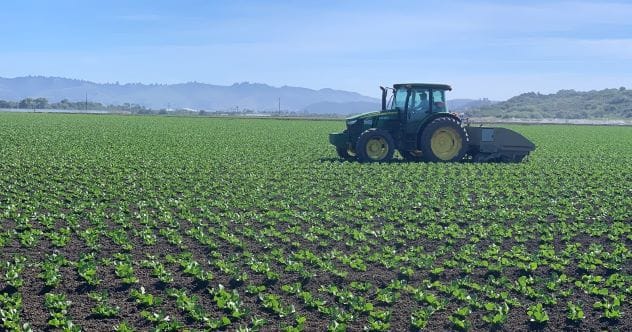When you think of NASA, images of rockets soaring into the cosmos likely spring to mind. But did you know that the same ingenuity fueling space exploration also births incredible technologies that benefit us right here on Earth? Many of these NASA spinoffs are powerful allies in our quest for a healthier planet. It’s fascinating to see how solutions designed for the harshness of space can address environmental concerns on our home world. Let’s explore ten amazing eco-friendly innovations that prove NASA’s impact reaches far beyond the stars, making a real difference in our daily lives and for the environment.
10 Cleaning Up with Iron Power: EZVI
During the Apollo era, cleaning rocket components required strong chemicals known as chlorinated solvents. While effective, these substances posed an environmental risk around launch areas. These pollutants were particularly challenging to remove because they are denser than water and don’t dissolve easily. To address this issue, NASA scientists and engineers co-developed Emulsified Zero-Valent Iron (EZVI). This innovative, two-step treatment uses tiny iron particles to neutralize harmful chemicals, transforming them into non-toxic substances. EZVI’s versatility allows it to decontaminate both soil and groundwater. Its cost-effectiveness and rapid treatment time, often cleaning sites within two to three months, have made it one of NASA’s most licensed technologies for groundwater remediation.
9 Wind Power for Extreme Worlds: Resilient Turbines
Mars presents an incredibly harsh environment, with average temperatures plummeting to -62°C (-81°F). To support future colonization, reliable renewable energy sources are essential. NASA identified a combination of solar and wind power as a promising solution, considering Mars’ slightly longer days and notorious dust storms. This led to the development of highly resilient wind turbines with minimal moving parts, designed to withstand extreme conditions. These same robust qualities have proven invaluable for expanding renewable energy access in some of Earth’s harshest environments. NASA first tested this technology at the South Pole, successfully reducing fuel dependence for research teams. Following these successful trials, the technology has been deployed worldwide, including in Alaska and Colorado. Northern Power Systems, NASA’s corporate partner, reports these turbines have successfully weathered extreme weather events like hurricanes and typhoons.
8 Beyond Moon Dust: Canary-S Air Guardian
On the Moon, fine lunar dust, or regolith, isn’t just a nuisance; it’s a hazard. These tiny particles can damage eyes and lungs, making air filtration crucial for lunar habitats. A company named Lunar Outpost developed a monitoring device called the Space Canary to tackle this. Through NASA’s NextSTEP program, Lunar Outpost collaborated with Lockheed Martin Space to adapt the design for both space and Earth applications. The redesigned device, now known as Canary-S, has been independently verified for effective outdoor pollution monitoring. This technology is now used to protect firefighters from carbon monoxide, monitor emissions from oil and gas operations, and track air quality at public schools, showcasing its versatility in safeguarding public health.
7 When Plants Talk: Smart Water-Saving Sensors
Have you ever wished your plants could tell you exactly when they need water? Thanks to a NASA-funded innovation, they practically can. Research revealed that a plant’s water content can be monitored by measuring its leaf thickness using electrical pulses. This concept was later transformed into a commercial product by AgriHouse Brands. Their sensor attaches directly to a plant’s leaf, sending real-time data about its health to the farmer and alerting them when watering is needed. This precision agriculture approach ensures plants receive water only when necessary, leading to significant savings in water, time, and money. Imagine your houseplants texting you for a drink – it’s closer to reality than you think!
6 Smart LEDs for Greener Growth: HELIAC
Growing plants in space, like on the International Space Station, comes with unique challenges. The constantly shifting day-night cycles and sub-optimal light conditions can hinder plant growth. Traditional grow lights consume a lot of energy and radiate heat, which can be detrimental to sensitive plants. LED lights offer a solution, requiring less energy and producing very little heat. To develop a sustainable light source for space agriculture, NASA partnered with Orbital Technologies Corporation. This collaboration led to the High Efficiency Lighting with Integrated Adaptive Control (HELIAC) system. HELIAC uses a series of small, square LED panels that can be individually adjusted. This smart system saves energy in two ways: by optimizing light emission for specific plants during different growth phases, and by only activating when they detect a plant in front of them. These cool LEDs may soon power an indoor farm near you, boosting food production efficiency.
5 Precision Farming: GPS-Guided Tractors
You might wonder how farm equipment relates to environmental benefits. Tilling land is essential for food production, but traditional methods can be inefficient. When farmers steer tractors by eye, they often overlap rows by about 10 percent. This overlap wastes seeds and fertilizer, and extends the time needed to complete the job. Self-guided tractors, however, can significantly reduce this overlap, improving resource use and increasing crop yields. John Deere leveraged NASA’s Jet Propulsion Laboratory’s GPS-correction software and global data to achieve this. By connecting their equipment to this network, they enabled tractors to follow courses with accuracy within inches, eliminating the need for expensive, large radio towers. These advancements in remote sensing empower farmers to use resources more efficiently, leading to higher yields and a smaller environmental footprint.
4 Virtual Twins for Real-World Savings: DigitalClone
Imagine creating a perfect digital copy of a physical component or system – that’s the idea behind a DigitalClone, or digital twin. This virtual replica can be used to predict how the real-world object will behave under various conditions. In the early 2000s, Sentient Science began developing this concept for mechanical parts, aiming to transform material performance data into predictive models for wear and tear. While it might not immediately sound eco-friendly, the implications are significant. Accurate digital twins allow companies to simulate component use and schedule predictive maintenance. This reduces repair costs and extends the lifespan of systems. Furthermore, digital testing is much faster and less resource-intensive than traditional physical testing, minimizing environmental impact. Sentient Science has extensively used its DigitalClone technology in the renewable energy sector, particularly for wind turbine gearboxes, contributing to lower a_cost for wind energy.
3 Feeding Plants Wisely: Next-Gen Fertilizer
Plants require nutrients to thrive, but conventional fertilizing methods can be wasteful. Typically, fertilizer is applied monthly, but plants don’t absorb all of it, leading to runoff. Florikan, with NASA’s collaboration for space crop production, developed a smarter solution. Instead of frequent, large applications, Florikan’s technology involves a single fertilizer application that releases nutrients in stages. This targeted approach uses only about one-third of the fertilizer compared to traditional methods. This technology offers two key environmental advantages. Firstly, using less fertilizer significantly reduces nutrient runoff, particularly nitrogen, which can cause harmful algal blooms in water bodies. Secondly, it conserves fertilizer, a finite resource, making agriculture more sustainable.
2 Finding Hidden Water: The WATEX System
Water is fundamental to life, yet freshwater reserves are increasingly strained, as seen by global droughts. Water scarcity affects a staggering 40 percent of the world’s population, and experts warn of rising water-related conflicts. However, there’s hope. Technology like WATEX, developed by Radar Technologies International using NASA data and techniques, can help locate hidden underground freshwater deposits. By combining various data sources, satellite imagery, and a specialized algorithm, WATEX creates 3D maps highlighting areas likely to contain water. Remarkably, it can operate even in conflict zones without endangering personnel. A major success for WATEX was the discovery of an estimated 66 trillion gallons of water beneath Turkana, Kenya. This technology has also successfully located water in Afghanistan, Angola, and Sudan, offering a vital tool in the face of growing water scarcity.
1 Robotic Clean-Up: The M-2000 Paint Stripper
Ships require regular maintenance, including paint stripping, to remain seaworthy. The conventional method, grit blasting, is effective but produces toxic airborne particles and waste that ends up in landfills. The M-2000 offers a cleaner, robotic alternative. Developed by UltraStrip Systems, Inc., with contributions from NASA technology for handling rocket booster casings, the M-2000 strips paint using a high-powered water jet. This process is strong enough to remove paint, leaving only paint chips and water as byproducts. The robot employs a vacuum to capture these byproducts, recycling the water while securely containing the paint chips. This method is estimated to be 200 percent more effective than grit blasting for contaminant removal, leading to fewer repainting cycles. The M-2000 demonstrates the growing role robotics can play in environmental conservation.
From the depths of our soil to the efficiency of our farms and the purity of our air, NASA’s technological advancements are making a tangible difference. These ten spinoffs are just a glimpse into how space-age innovation translates into practical, eco-friendly solutions for our planet. It’s clear that looking to the stars can also help us cherish and protect our home world.
Which of these NASA eco-innovations impressed you the most? Do you know of others? Leave your comment below and join the conversation!










